Abstract
1. We have used gait analysis to investigate the efficacy of maintenance therapy with a levodopa/carbidopa combination in patients with idiopathic Parkinsonism, who do not have overt fluctuations in control in relation to administration of medication. 2. Fourteen patients (aged 64 to 88 years) receiving maintenance therapy with levodopa and carbidopa (Sinemet Plus) entered a placebo-controlled, randomised cross-over study of the effect of omission of a morning dose of active treatment on distance/time parameters of gait. Measurements made 2, 4 and 6 h after the morning treatment were standardised by taking the pre-treatment measurement on that day as baseline. 3. The mean increase in stride length (7%) and decrease in double support time (20%) on active treatment were small but statistically significant (P less than 0.0001, in each case), there being no significant placebo effect on either gait parameter (P = 0.69 and 0.08 respectively). Neither active nor placebo treatments had any significant (P greater than 0.45 in each case) effect on the lying, standing or postural fall in mean arterial pressure, measurements being made in the same temporal relation to the treatments as was gait. 4. In a generalised linear model, after allowing for the effect (P less than 0.0001) of intrinsic variability in pre-treatment speed as well as for structure of the study, nature of treatment had an effect on stride length over the whole walk, significant at P = 0.002. 5. Pre-treatment postural fall in mean arterial pressure was nearly as significant (P = 0.003) as the nature of treatment in the context of such a model: the greater the fall, the greater the increment in stride length seen following active or placebo treatment. This was probably explained by an acquired tolerance to the fall as the day progressed. 6. The major determinant (P less than 0.0001) of the change in double support time over the whole walk, after allowing for the structure of the study, appeared to be the post treatment mean arterial standing blood pressure. The lower the pressure, the shorter the double support time, and hence, the greater the tendency to a hurried gait. 7. Nature of treatment, when added into the models described in summary points 5 and 6, had no significant effect (P greater than 0.25, in each case).(ABSTRACT TRUNCATED AT 400 WORDS)
Full text
PDF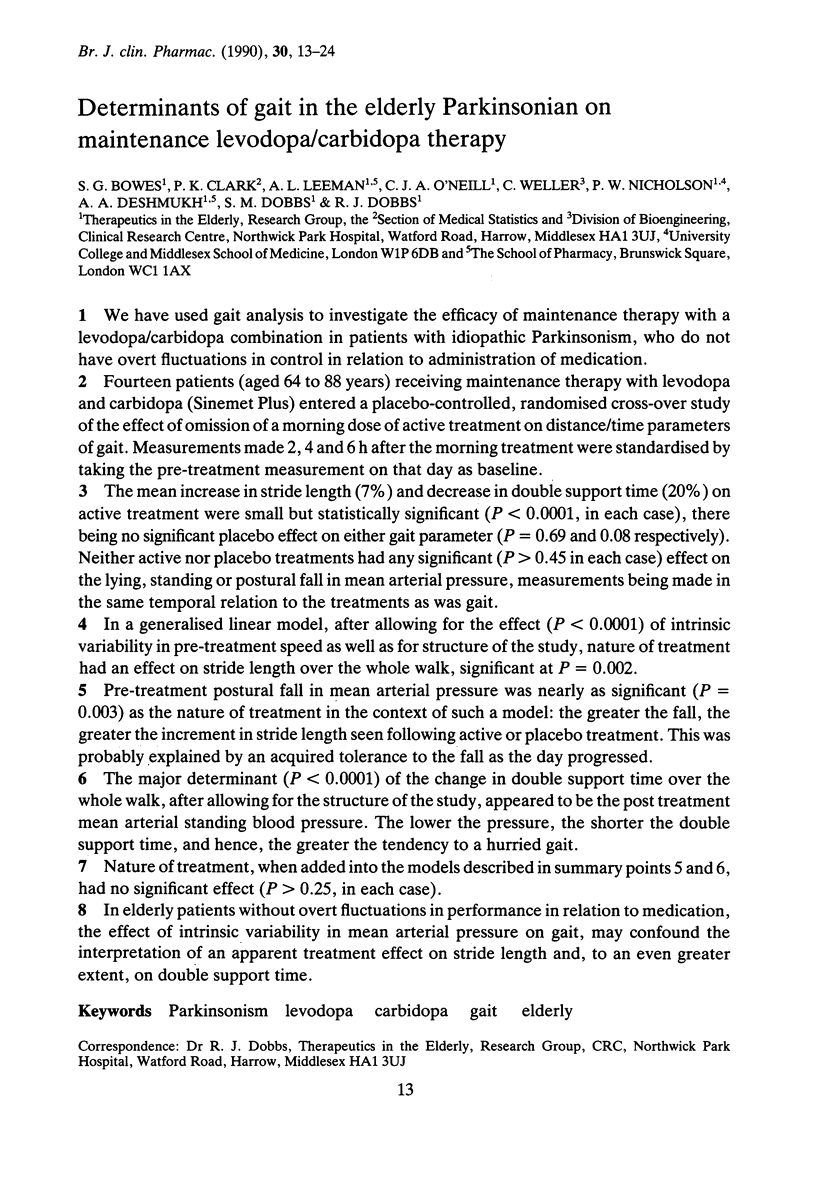
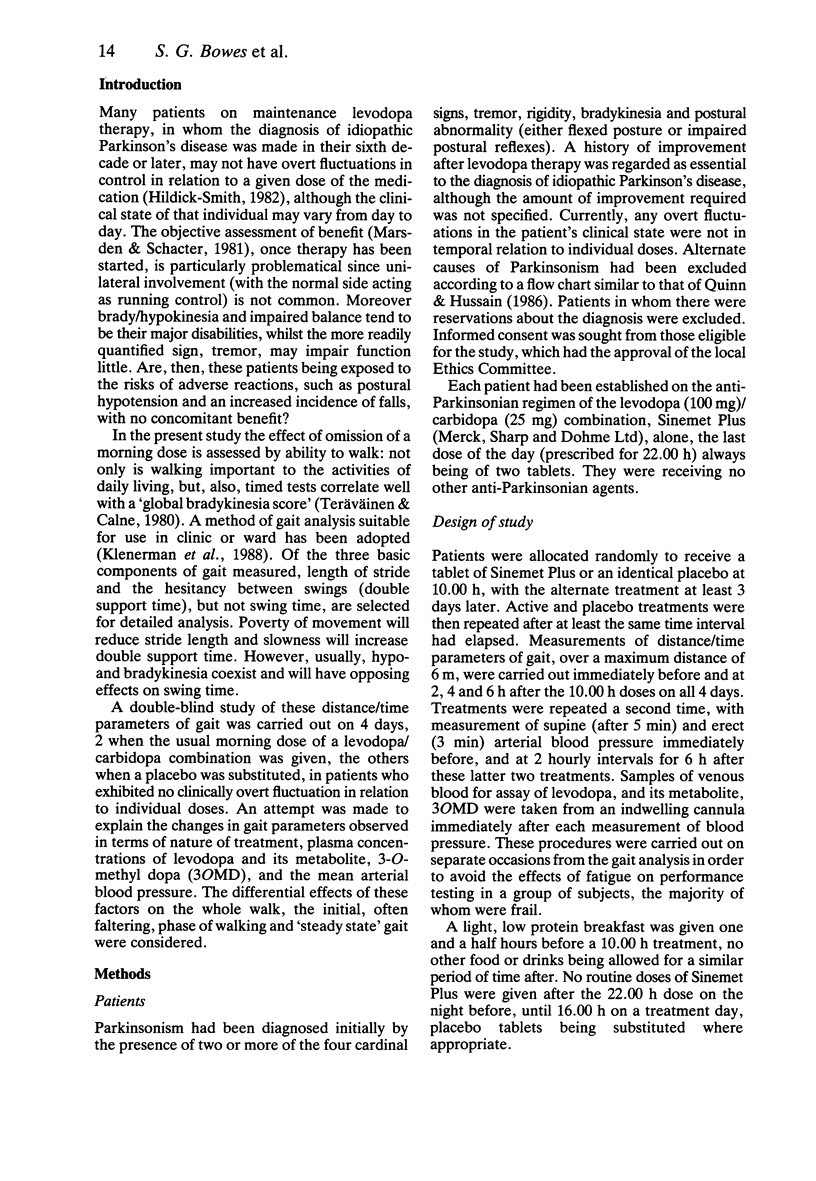
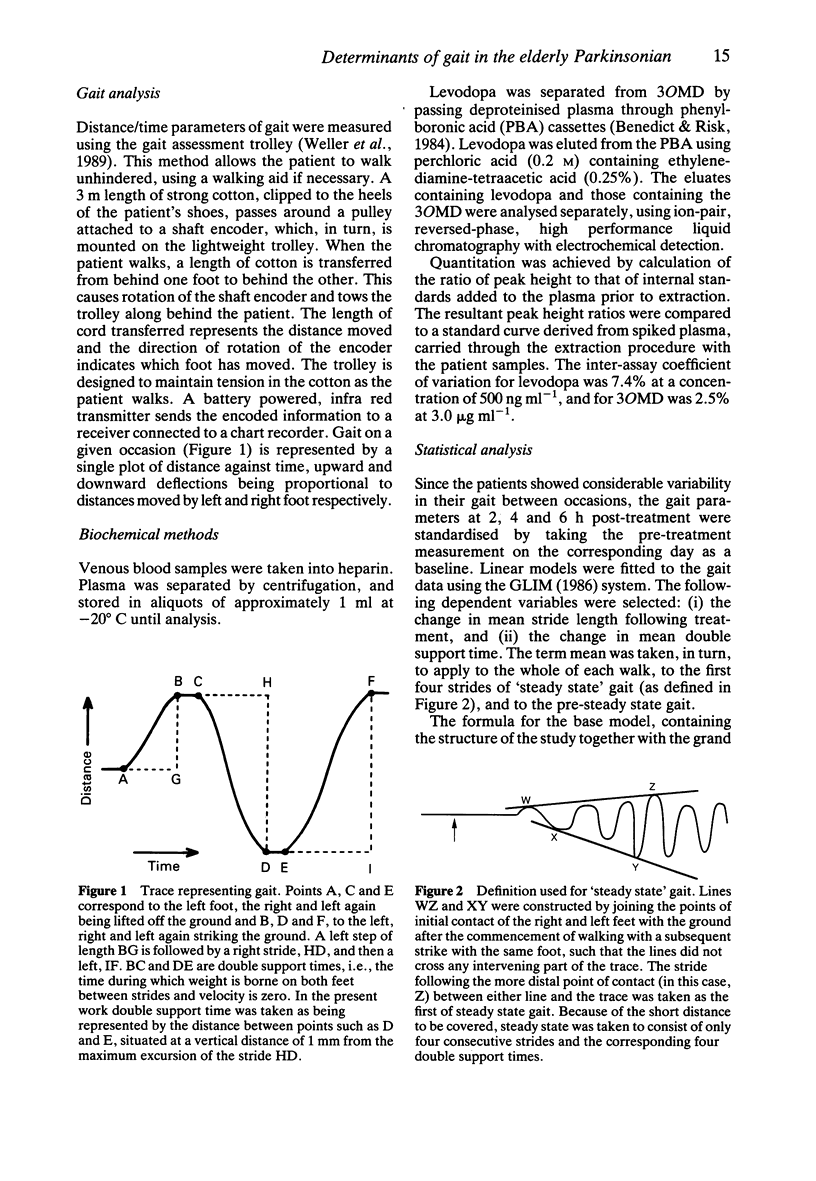
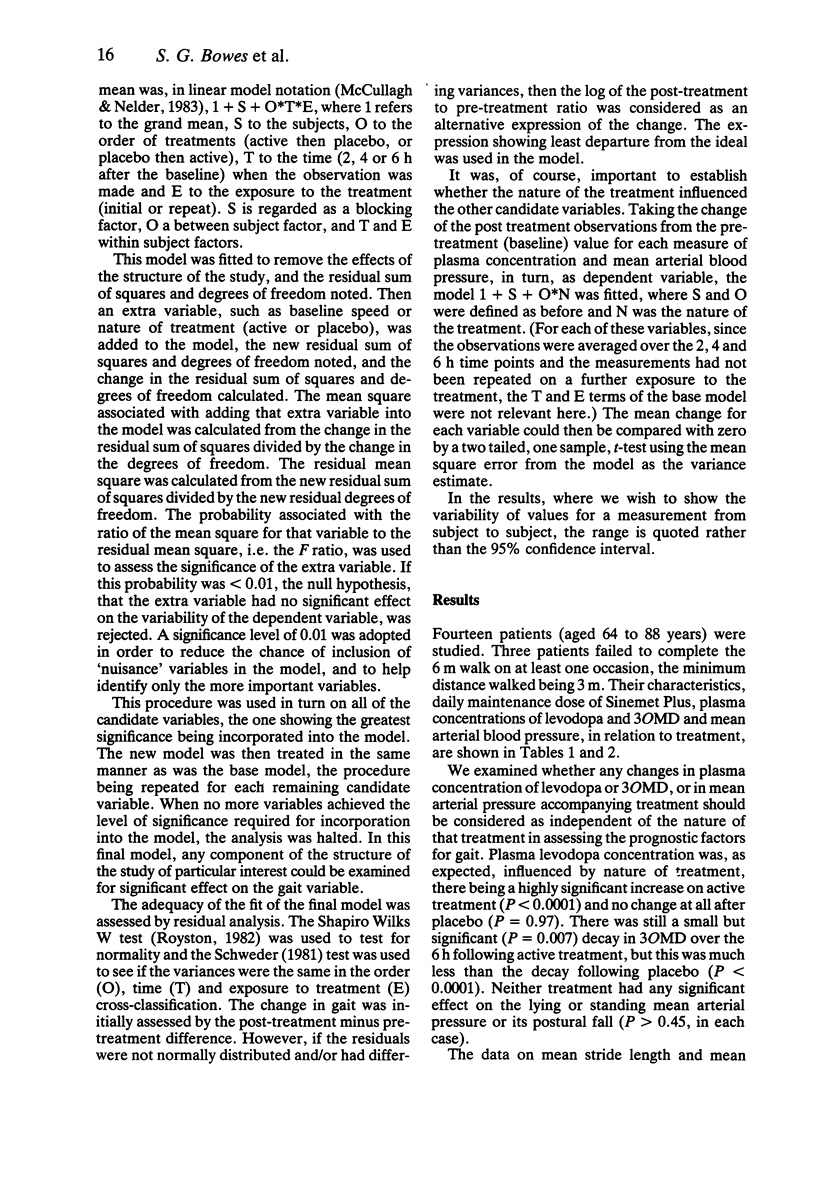
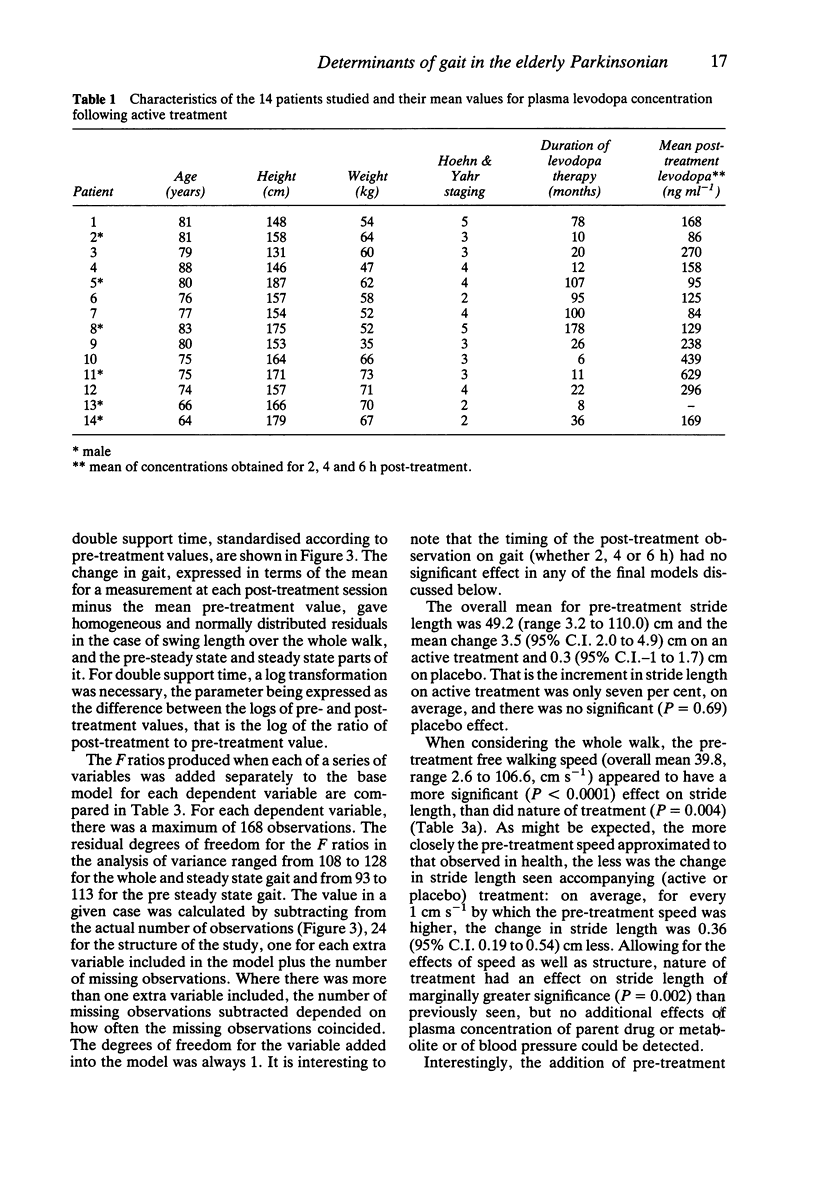
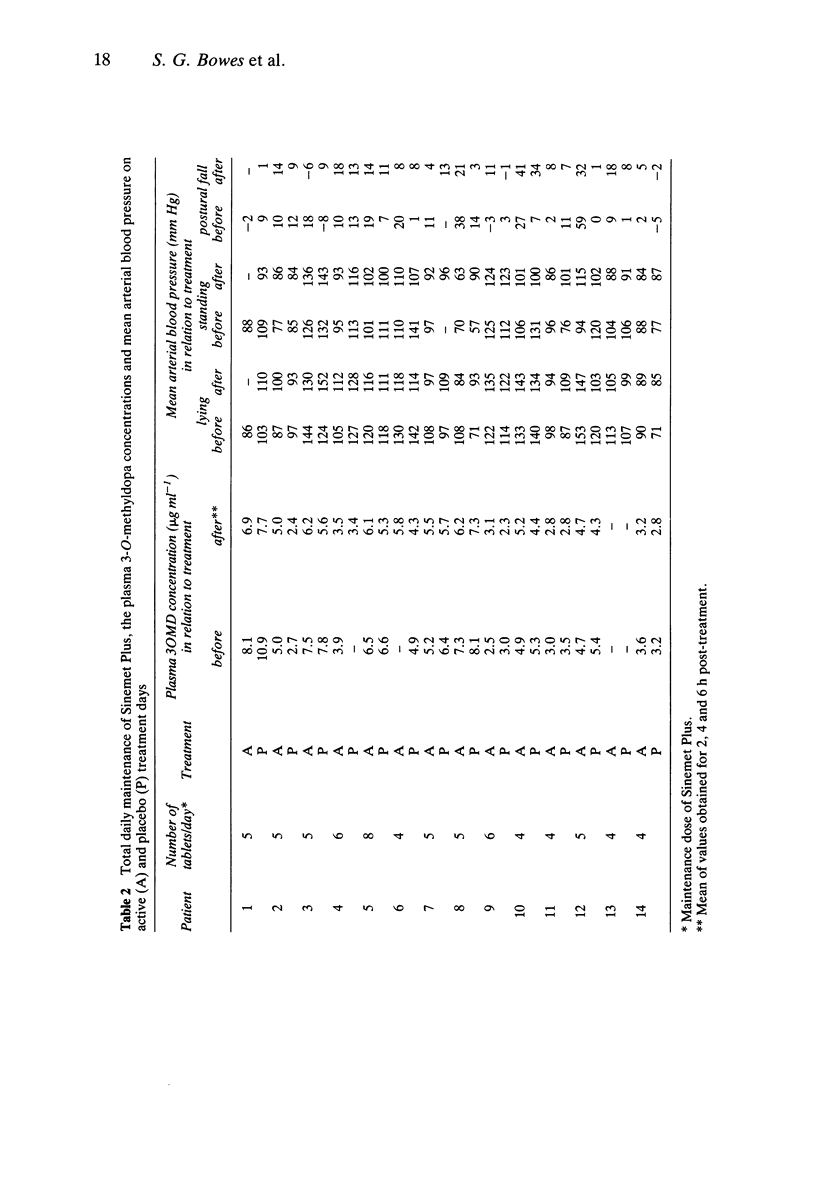
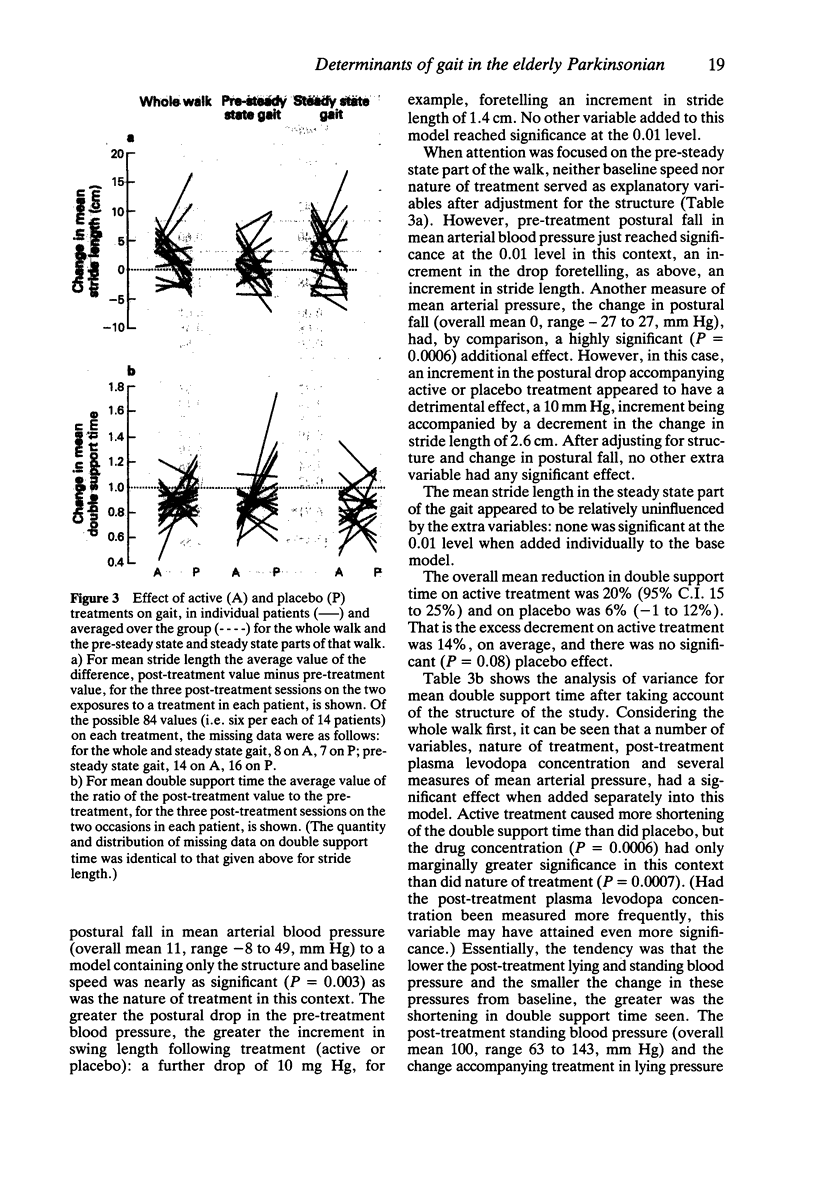
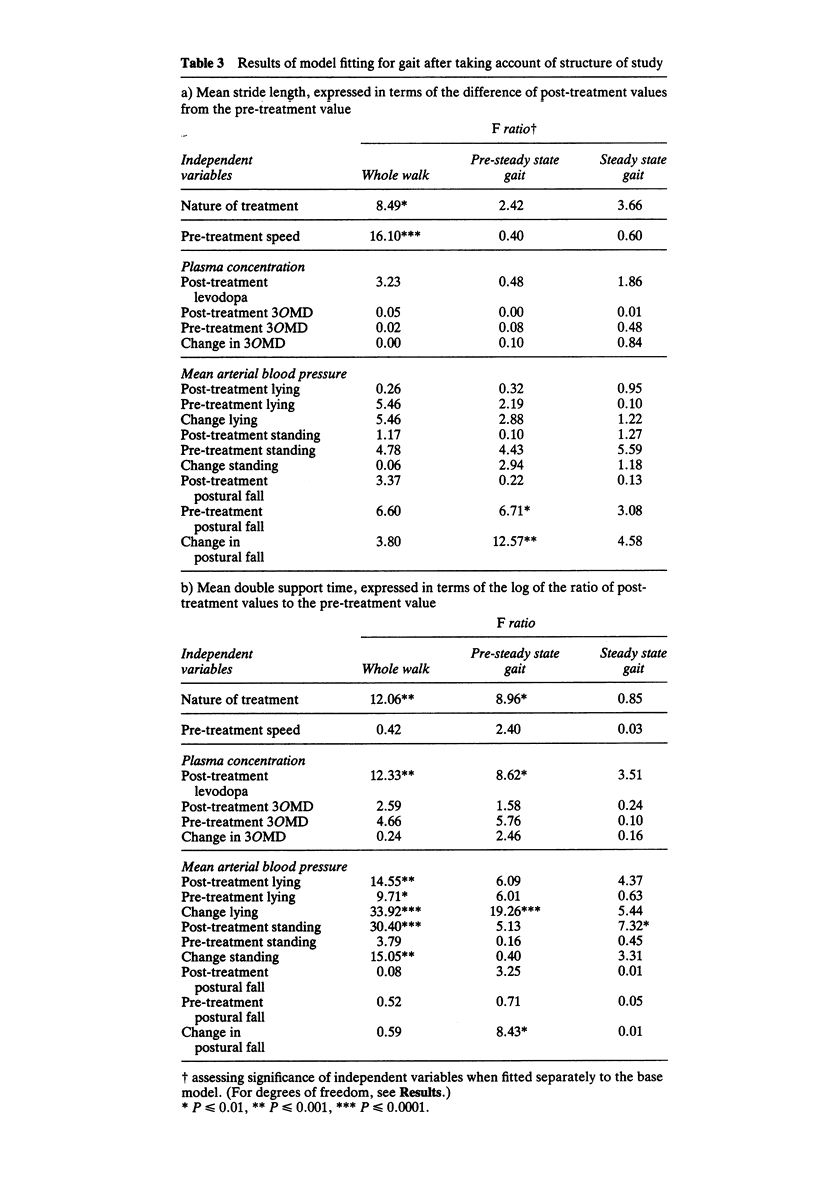
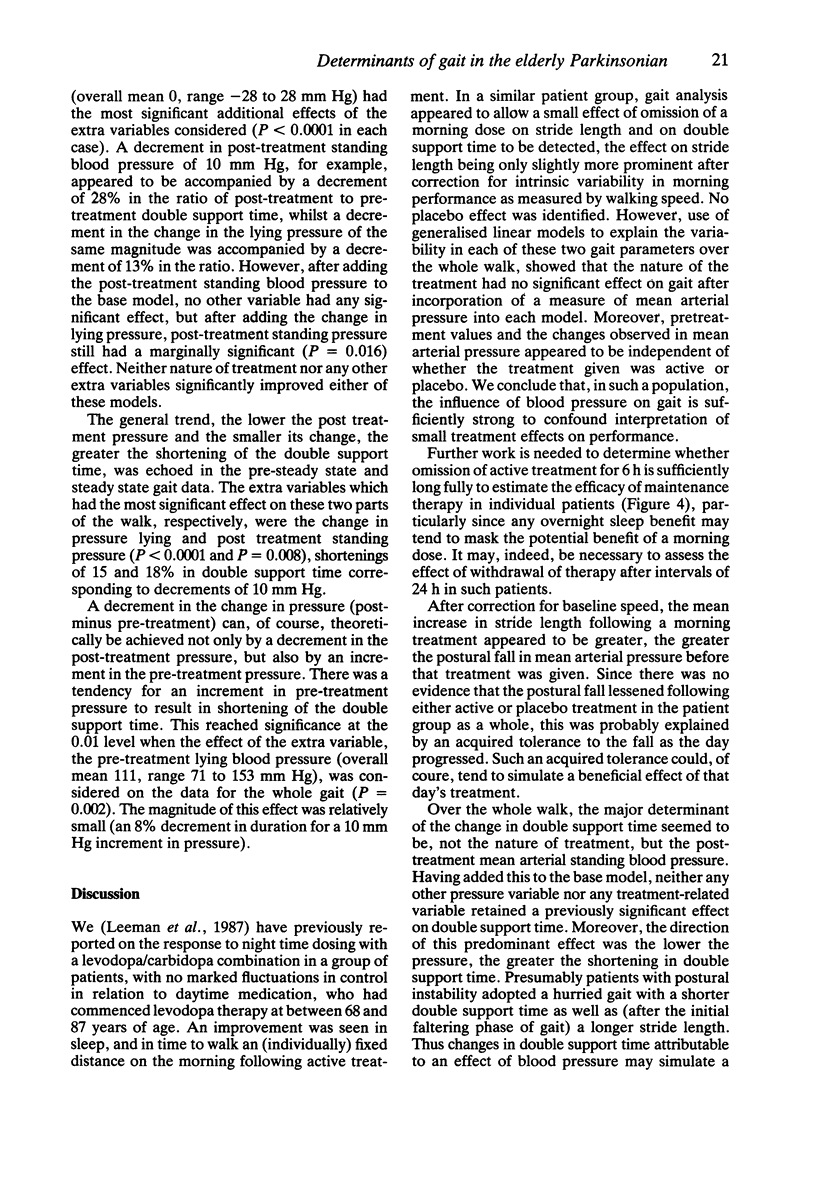
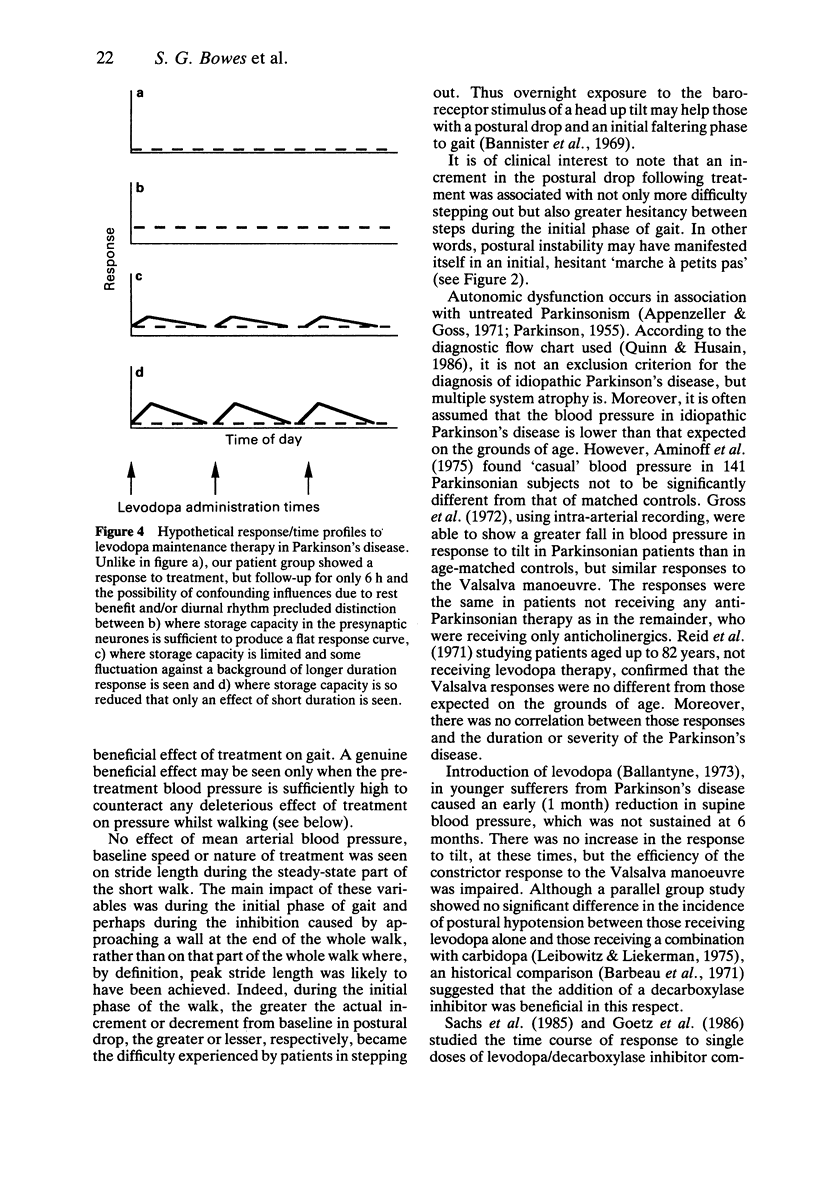
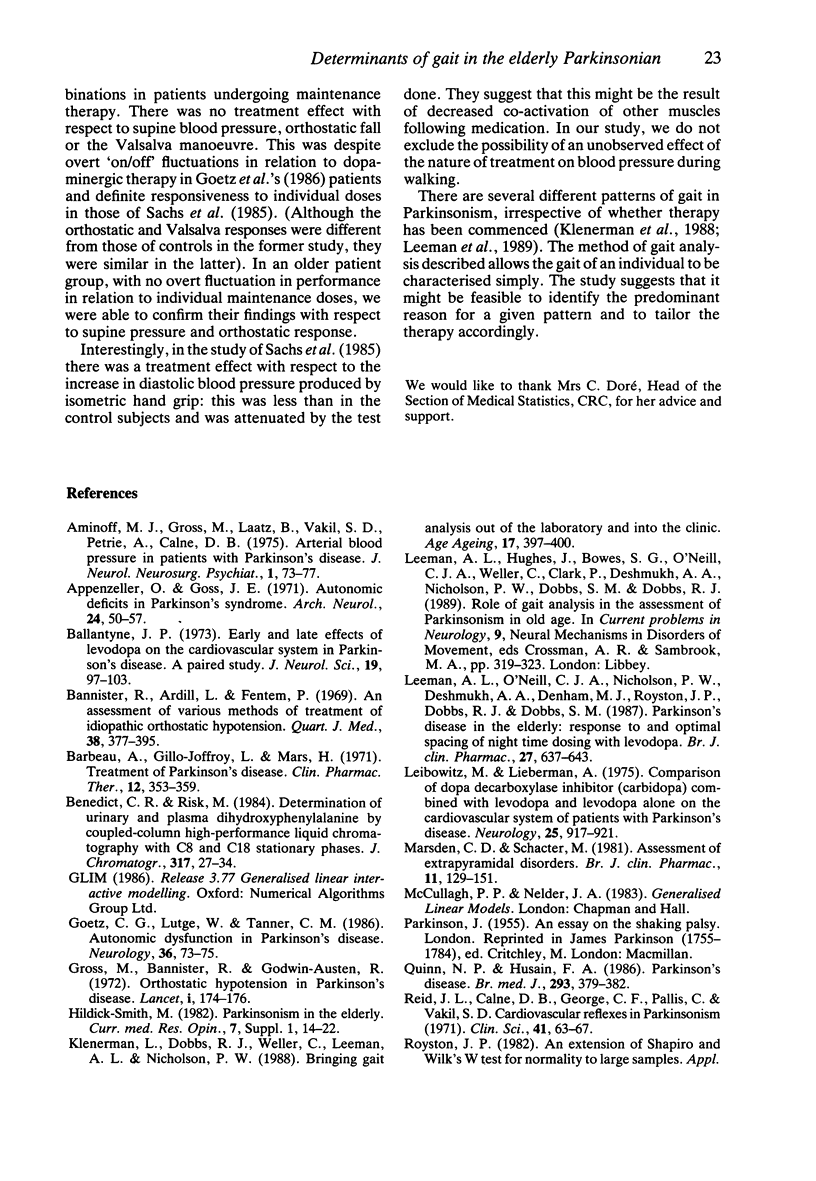
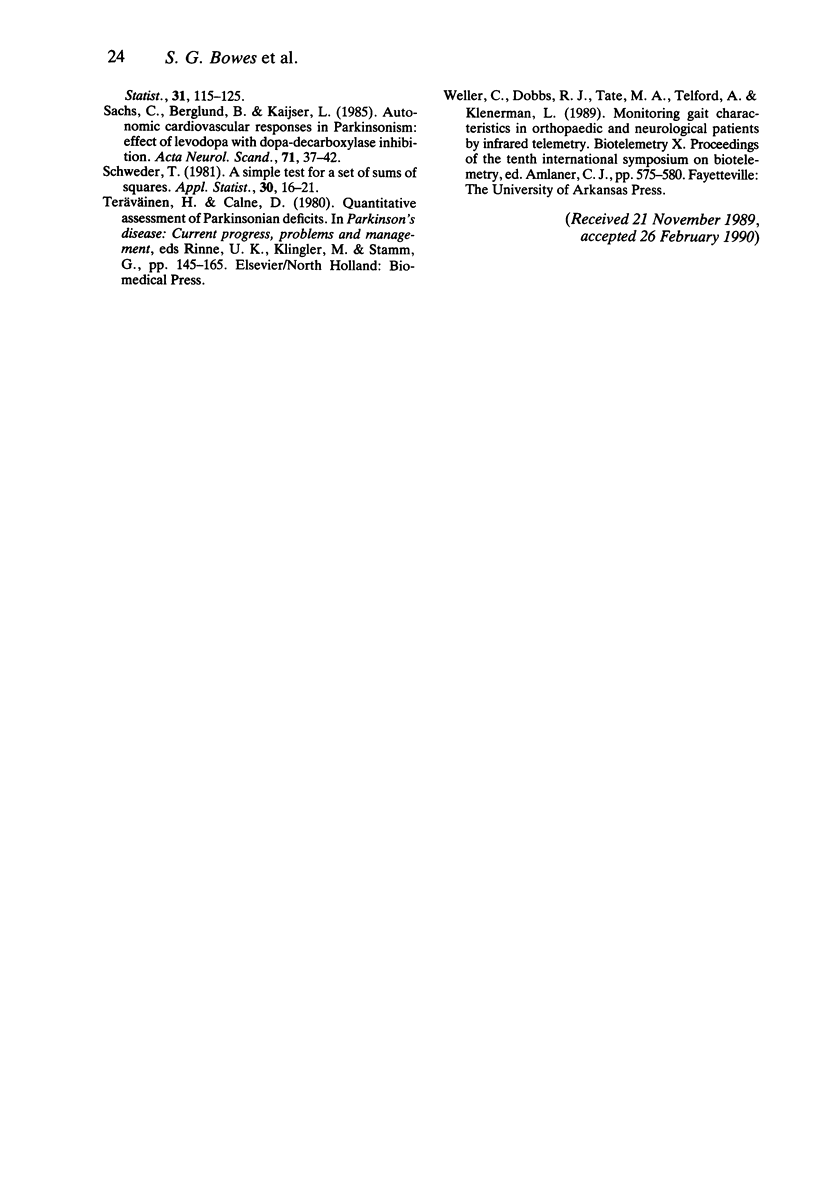
Selected References
These references are in PubMed. This may not be the complete list of references from this article.
- Aminoff M. J., Gross M., Laatz B., Vakil S. D., Petrie A., Calne D. B. Arterial blood pressure in patients with Parkinson's disease. J Neurol Neurosurg Psychiatry. 1975 Jan;38(1):73–77. doi: 10.1136/jnnp.38.1.73. [DOI] [PMC free article] [PubMed] [Google Scholar]
- Appenzeller O., Goss J. E. Autonomic deficits in Parkinson's syndrome. Arch Neurol. 1971 Jan;24(1):50–57. doi: 10.1001/archneur.1971.00480310078007. [DOI] [PubMed] [Google Scholar]
- Ballantyne J. P. Early and late effects of levodopa on the cardiovascular system in Parkinson's disease. A paired study. J Neurol Sci. 1973 May;19(1):97–103. doi: 10.1016/0022-510x(73)90060-9. [DOI] [PubMed] [Google Scholar]
- Bannister R., Ardill L., Fentem P. An assessment of various methods of treatment of idiopathic orthostatic hypotension. Q J Med. 1969 Oct;38(152):377–395. [PubMed] [Google Scholar]
- Barbeau A., Gillo-Joffroy L., Mars H. Treatment of Parkinson's disease with levodopa and Ro 4-4602. Clin Pharmacol Ther. 1971 Mar-Apr;12(2):353–359. doi: 10.1002/cpt1971122part2353. [DOI] [PubMed] [Google Scholar]
- Benedict C. R., Risk M. Determination of urinary and plasma dihydroxyphenylalanine by coupled-column high-performance liquid chromatography with C8 and C18 stationary phases. J Chromatogr. 1984 Dec 28;317:27–34. doi: 10.1016/s0021-9673(01)91644-9. [DOI] [PubMed] [Google Scholar]
- Goetz C. G., Lutge W., Tanner C. M. Autonomic dysfunction in Parkinson's disease. Neurology. 1986 Jan;36(1):73–75. doi: 10.1212/wnl.36.1.73. [DOI] [PubMed] [Google Scholar]
- Gross M., Bannister R., Godwin-Austen R. Orthostatic hypotension in Parkinson's disease. Lancet. 1972 Jan 22;1(7743):174–176. doi: 10.1016/s0140-6736(72)90571-5. [DOI] [PubMed] [Google Scholar]
- Hildick-Smith M. Parkinsonism in the elderly. Curr Med Res Opin. 1982;7(Suppl 1):14–22. [PubMed] [Google Scholar]
- Klenerman L., Dobbs R. J., Weller C., Leeman A. L., Nicholson P. W. Bringing gait analysis out of the laboratory and into the clinic. Age Ageing. 1988 Nov;17(6):397–400. doi: 10.1093/ageing/17.6.397. [DOI] [PubMed] [Google Scholar]
- Leeman A. L., O'Neill C. J., Nicholson P. W., Deshmukh A. A., Denham M. J., Royston J. P., Dobbs R. J., Dobbs S. M. Parkinson's disease in the elderly: response to and optimal spacing of night time dosing with levodopa. Br J Clin Pharmacol. 1987 Nov;24(5):637–643. doi: 10.1111/j.1365-2125.1987.tb03223.x. [DOI] [PMC free article] [PubMed] [Google Scholar]
- Leibowitz M., Lieberman A. Comparison of dopa decarboxylase inhibitor (carbidopa) combined with levodopa and levodopa alone on the cardiovascular system of patients with parkinson's disease. Neurology. 1975 Oct;25(10):917–921. doi: 10.1212/wnl.25.10.917. [DOI] [PubMed] [Google Scholar]
- Marsden C. D., Schachter M. Assessment of extrapyramidal disorders. Br J Clin Pharmacol. 1981 Feb;11(2):129–151. doi: 10.1111/j.1365-2125.1981.tb01118.x. [DOI] [PMC free article] [PubMed] [Google Scholar]
- Quinn N. P., Husain F. A. Parkinson's disease. Br Med J (Clin Res Ed) 1986 Aug 9;293(6543):379–382. doi: 10.1136/bmj.293.6543.379. [DOI] [PMC free article] [PubMed] [Google Scholar]
- Reid J. L., Calne D. B., George C. F., Pallis C., Vakil S. D. Cardiovascular reflexes in Parkinsonism. Clin Sci. 1971 Jul;41(1):63–67. doi: 10.1042/cs0410063. [DOI] [PubMed] [Google Scholar]


